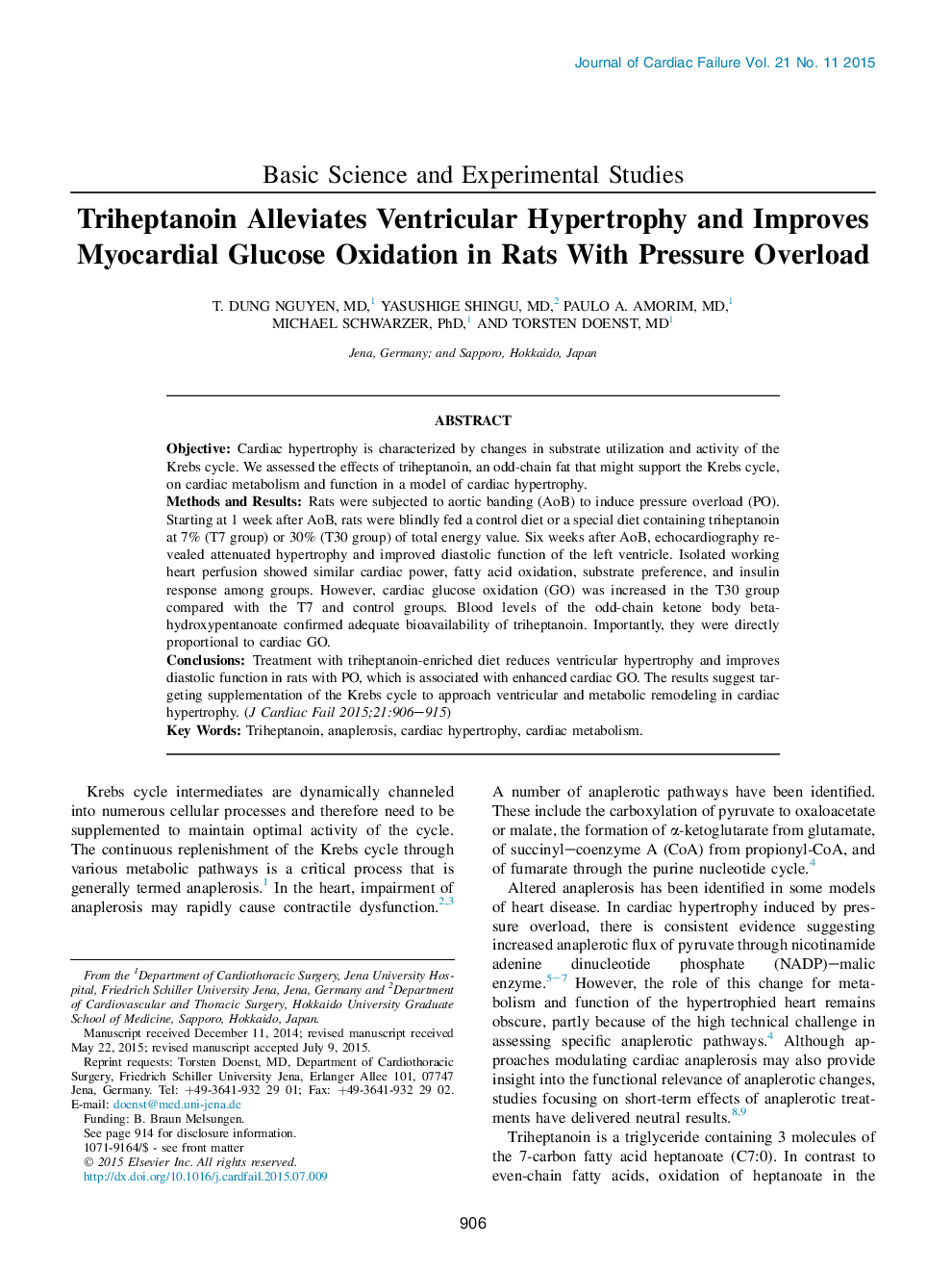| Article ID | Journal | Published Year | Pages | File Type |
|---|---|---|---|---|
| 2958950 | Journal of Cardiac Failure | 2015 | 10 Pages |
•Triheptanoin is an odd-chain fat that may modulate the activity of the Krebs cycle.•We assessed the effects of triheptanoin diets in a model of cardiac hypertrophy.•Triheptanoin reduced cardiac hypertrophy and improved diastolic function.•These treatment effects were linked to enhanced myocardial glucose oxidation.•Triheptanoin may be a metabolic approach against cardiac hypertrophy and dysfunction.
ObjectiveCardiac hypertrophy is characterized by changes in substrate utilization and activity of the Krebs cycle. We assessed the effects of triheptanoin, an odd-chain fat that might support the Krebs cycle, on cardiac metabolism and function in a model of cardiac hypertrophy.Methods and ResultsRats were subjected to aortic banding (AoB) to induce pressure overload (PO). Starting at 1 week after AoB, rats were blindly fed a control diet or a special diet containing triheptanoin at 7% (T7 group) or 30% (T30 group) of total energy value. Six weeks after AoB, echocardiography revealed attenuated hypertrophy and improved diastolic function of the left ventricle. Isolated working heart perfusion showed similar cardiac power, fatty acid oxidation, substrate preference, and insulin response among groups. However, cardiac glucose oxidation (GO) was increased in the T30 group compared with the T7 and control groups. Blood levels of the odd-chain ketone body beta-hydroxypentanoate confirmed adequate bioavailability of triheptanoin. Importantly, they were directly proportional to cardiac GO.ConclusionsTreatment with triheptanoin-enriched diet reduces ventricular hypertrophy and improves diastolic function in rats with PO, which is associated with enhanced cardiac GO. The results suggest targeting supplementation of the Krebs cycle to approach ventricular and metabolic remodeling in cardiac hypertrophy.
